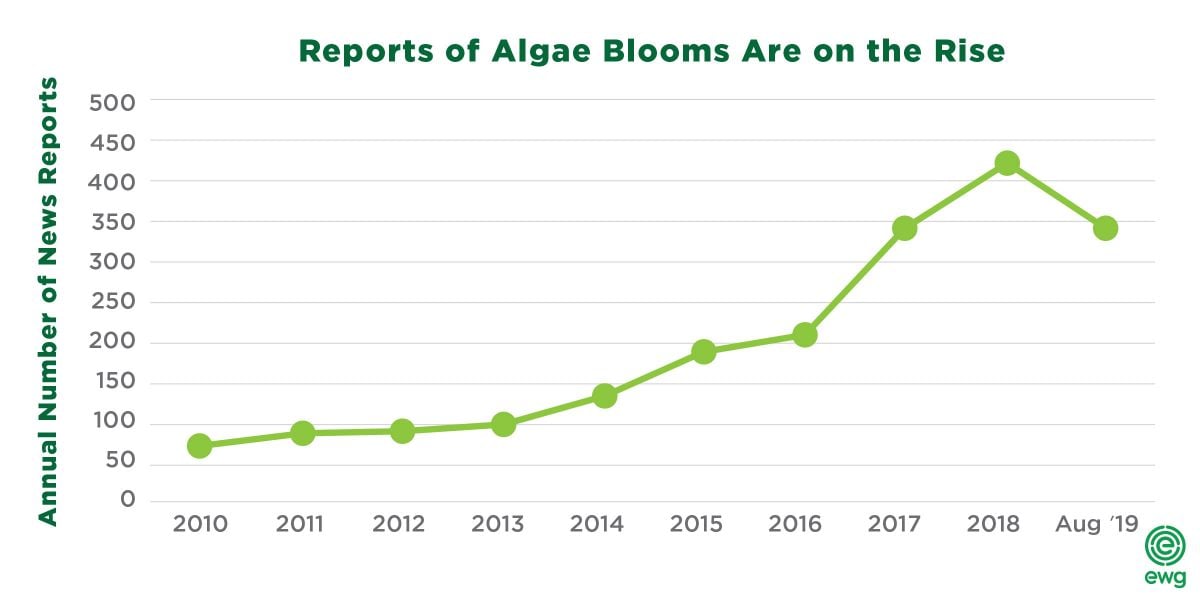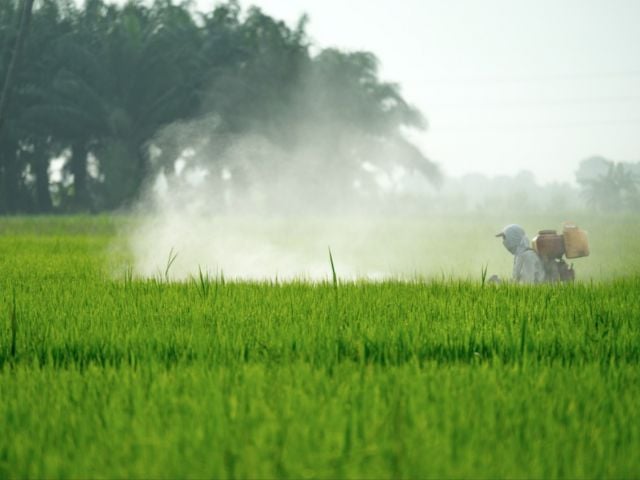
A record-breaking number of potentially toxic algae blooms have plagued bodies of water across the country this summer. According to our map, which tracks news stories of algae blooms, as of August 27, 354 algae outbreaks have occurred in 41 states. That’s 65 more bloom stories than the 289 that had occurred by this time last year.
The number of news reports about algae outbreaks has increased every year since we began keeping a record of them, in 2010. This year is on track to have the most blooms of any year since then, with an already high number of blooms. The season usually lasts through October, but in recent years, blooms have appeared during winter months in warmer places such as California and Florida.

Algae blooms are actually not algae but rather microscopic bacteria. They are commonly triggered by the pollution of water with phosphorus and nitrate that run off farm fields and feed the bacteria. Algae outbreaks that produce toxins can be hazardous to people, pets and wildlife through recreational uses of water, as well as when these bodies of water are a source of drinking water.
Fourteen blooms have affected drinking water this year. And there have been serious impacts on animals that have used algae-filled waters for recreation; eight blooms have killed dogs, five in August alone.
Before going to a lake, pond or river this Labor Day weekend, check your local news and state health department websites to make sure there have been no signs of toxic algae. Or check out our video on how to recognize a bloom. If you suspect a water body has a bloom, keep your pets, children and yourself far away from the water.



